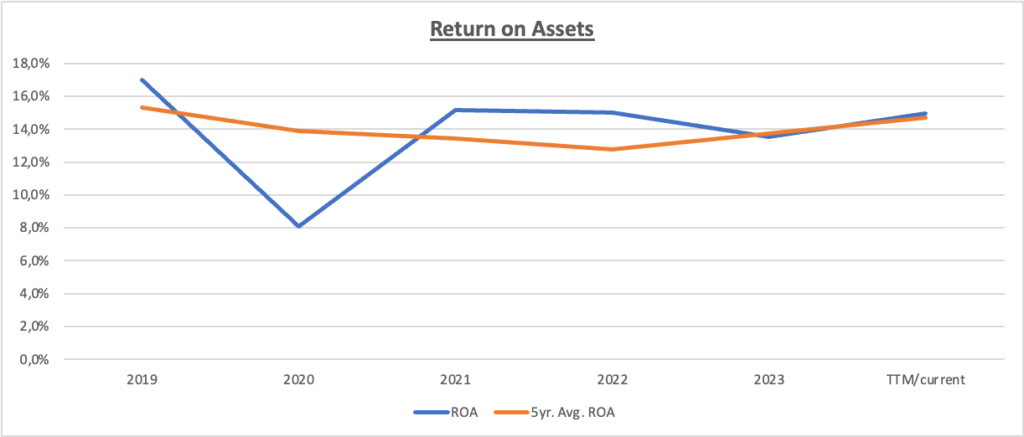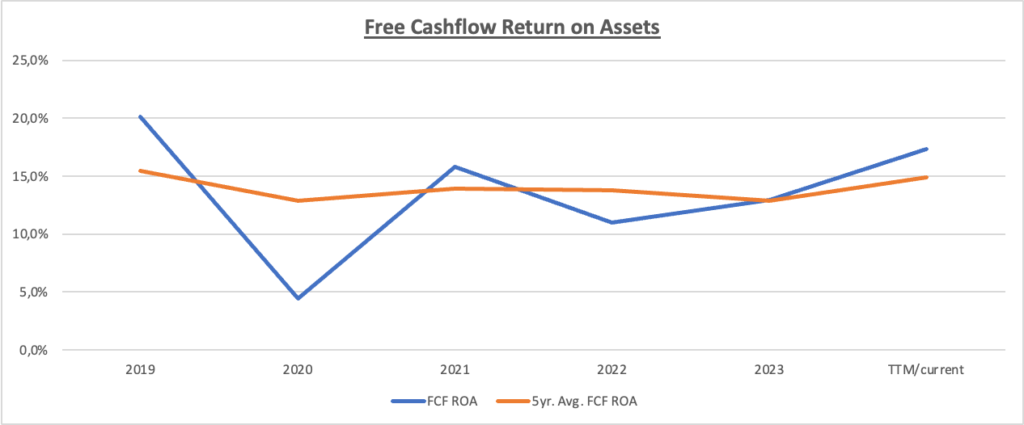In the dynamic realm of global e-commerce and athletic wear, Nike stands as an iconic brand, capturing the attention of investors and market analysts worldwide. As a leading force in the sportswear industry, Nike’s financial performance serves as a vital indicator of the sector’s health and future direction. In this in-depth analysis, we explore the profitability of Nike. By examining key financial metrics and strategic initiatives, we aim to provide a comprehensive understanding of the company’s current status and future potential. Whether you’re a seasoned investor or simply intrigued by the world of sports fashion, join us as we unravel the complexities of Nike’s profitability and discover what the future holds for this industry titan.
Profitability: The Critical Driver of Nike’s Financial Viability
Profitability is the cornerstone of any business’s financial health and long-term viability, and Nike is no exception. It measures a company’s ability to generate income relative to its revenue, operating costs, and other expenses. For investors, analysts, and stakeholders, profitability is a crucial indicator of a company’s efficiency in managing its resources, potential for growth, and capacity to provide returns on investment.
Understanding Nike’s profitability involves examining several key metrics:
Return on Assets (ROA): This metric indicates how effectively Nike is using its assets to generate profit. A higher ROA signifies more efficient asset utilization, which is particularly important for a company like Nike, with significant investments in product development, marketing, and global distribution networks.
Profit Margins: These ratios, including gross margin, operating margin, and net margin, show the percentage of revenue that remains after various stages of costs are deducted. High profit margins suggest that Nike is effectively controlling its costs and converting sales into actual profit.
Free Cash Flow Return on Assets (FCF ROA): This measure assesses how well Nike generates free cash flow from its assets. Free cash flow is critical because it represents the cash that Nike can use to reinvest in its business, pay dividends, or reduce debt, thus reflecting financial flexibility and resilience.
Profitability is not just about generating income; it’s about sustaining that ability over time. For Nike, maintaining strong profitability is essential to support its expansive growth strategies, innovate in the competitive sportswear market, and navigate economic uncertainties. Moreover, profitability directly impacts Nike’s stock performance, influencing investor confidence and market valuation.
By analyzing Nike’s profitability metrics, we can gain deeper insights into its operational efficiency, strategic positioning, and future growth prospects. This understanding helps investors make informed decisions and positions Nike within the broader context of the global sportswear and apparel industry.
Analyzing Return on Assets (ROA)
Return on Assets (ROA) is a fundamental measure of a company’s profitability relative to its total assets. It provides insights into how efficiently a company like Nike is using its assets to generate earnings. By examining ROA, we can evaluate the effectiveness of Nike’s asset utilization and its capacity to convert investments into net income. In this section, we will delve into Nike’s ROA, comparing it with industry benchmarks and historical performance to gauge its operational efficiency and strategic effectiveness. This analysis will help us understand how well Nike is leveraging its vast resources to drive profitability and sustain competitive advantage.

The chart above illustrates the trend of Nike’s Return on Assets (ROA) over the past five years, compared with its five-year average ROA. Here are the key observations and comparisons with industry benchmarks:
- Pandemic Impact: Nike’s ROA dropped sharply from about 16% in 2019 to 8% in 2020, reflecting the significant impact of the COVID-19 pandemic on its profitability and asset utilization.
- Recovery Phase: From 2021 onwards, Nike’s ROA recovered to around 14% and has remained close to the 5-year average, indicating a return to stable asset efficiency.
- Strategic Outlook: The recovery in ROA post-pandemic suggests effective asset management and strategic resilience, positioning Nike well for sustained financial health and growth.
Nike’s ROA Industry Benchmarking
To understand how Nike’s Return on Assets (ROA) measures up in the sportswear industry, look at industry benchmarks. Nike, a leader in athletic gear, competes closely with rivals like adidas, Puma, and Under Armour.
| TTM | Nike | Adidas | Under Armour | Puma |
| ROA | 15.0% | 0.68% | 4.79% | 4.04% |
Nike’s ROA stands at an impressive 15.0%, significantly outpacing its peers and highlighting its superior ability to generate profit from its assets. In comparison, Adidas shows a remarkably low ROA of 0.68%, indicating it is struggling to effectively utilize its assets for profit generation. Under Armour, with a ROA of 4.79%, performs better than Adidas but still falls short of Nike’s efficiency. Similarly, Puma’s ROA of 4.04% reflects a moderate level of efficiency in asset use, akin to Under Armour.
This comparison underscores Nike’s standout performance in the industry, showcasing its adeptness in leveraging assets to achieve profitability. When considering these companies as representatives of the industry, the average ROA emerges as 6.13%. Nike’s ROA being well above this industry average further emphasizes its leading position in terms of asset profitability.
Exploring Nike’s Profit Margins
Profit margins are crucial for assessing a company’s financial health and operational efficiency. By examining various profit margins, we can better understand how Nike converts revenue into profit at different stages of its business. This section will explore three key profit margin metrics: Gross Profit Margin, Operating Profit Margin, and Net Profit Margin. Each metric offers valuable insights into Nike’s cost management, operational performance, and overall profitability. Our goal is to show how well Nike is managing its expenses and maximizing earnings in a competitive market.
| 2021 | 2022 | 2023 | 2024/TTM | |
| Gross Profit Margin | 58.37% | 53.92% | 43.53% | 44.56% |
| Operating Profit Margin | 15.58% | 14.29% | 11.55% | 12.29% |
| Net Profit Margin | 12.86% | 12.94% | 9.9% | 11.1% |
Analyzing Nike’s profit margins over the years 2021 to 2024/TTM (Trailing Twelve Months) reveals some significant trends and insights about the company’s financial health and performance. Let’s break down each type of profit margin:
- Gross Profit Margin: Demonstrates a recovery in 2024/TTM after a steady decline from 2021 to 2023, indicating improved efficiency in managing the cost of goods sold.
- Operating Profit Margin: Shows a positive trend with a rebound and subsequent improvement in 2024/TTM, reflecting better management of operating expenses and operational efficiency.
- Net Profit Margin: Despite a significant drop in 2023, the gradual recovery in 2024 suggests effective strategies for managing non-operating costs and other factors impacting overall profitability.
Nike’s Profit Margins Benchmarking
Benchmarking Nike’s profit margins against its peers using the latest Trailing Twelve Months (TTM) data provides a detailed perspective on its financial performance and competitive standing. Here’s a comprehensive analysis:
| TTM | Nike | Adidas | Under Armour | Puma |
| Gross Profit Margin | 44.56% | 49.11% | 46.13% | 46.6% |
| Operating Profit Margin | 12.29% | 2.53% | 4.03% | 7.09% |
| Net Profit Margin | 11.1% | 0.59% | 4.07% | 3.21% |
Gross Profit Margin:
Nike’s gross profit margin of 44.56% is slightly lower than those of its peers, with Adidas at 49.11%, Under Armour at 46.13%, and Puma at 46.6%. While Nike’s margin is strong, it indicates that Adidas, Under Armour, and Puma are slightly more efficient in managing their production costs relative to their sales.
Operating Profit Margin:
Nike excels in operating profit margin at 12.29%, considerably higher than Adidas’s 2.53%, Under Armour’s 4.03%, and Puma’s 7.09%. This suggests that Nike is more effective in controlling its operating expenses, such as selling, general, and administrative expenses, relative to its peers. The significant gap between gross and operating profit margins for Adidas indicates higher operating expenses, reducing overall profitability.
Net Profit Margin:
Nike’s net profit margin of 11.1% also leads among its peers, with Adidas at 0.59%, Under Armour at 4.07%, and Puma at 3.21%. This margin reflects Nike’s overall efficiency in managing not only its cost of goods sold and operating expenses but also other expenses such as taxes and interest. The substantial difference between Adidas’s gross and net profit margins suggests high non-operating expenses or lower efficiency in other areas of expense management.
The Importance of FCF ROA in Nike’s Profitability Analysis
When it comes to assessing a company’s financial health and performance, one metric that stands out for its comprehensive insight is the Free Cash Flow Return on Assets (FCF ROA). This metric not only evaluates a company’s efficiency in generating cash flows but also provides a clear picture of how well a company utilizes its assets to generate returns.
Examining the trend of Nike’s Free Cash Flow Return on Assets (FCF ROA) over recent years provides valuable insights into its financial performance and asset efficiency. Here’s a detailed analysis of the FCF ROA development from 2019 to the current Trailing Twelve Months (TTM):

This graph of Nike’s FCF ROA has shown notable fluctuations over the past years compared to the 5-year average FCF ROA. In 2019, Nike’s FCF ROA started at a high point, around 20%, well above the 5-year average of approximately 15%, indicating excellent efficiency in generating free cash flow from its assets. However, in 2020, there was a significant dip, falling to about 5%, likely due to the impacts of the COVID-19 pandemic, which caused disruptions in operations and supply chains globally.
By 2021, Nike’s FCF ROA rebounded sharply, climbing back to around 15%, closely aligning with the 5-year average. This recovery suggests that Nike managed to adapt and improve its operational efficiency post-pandemic. In 2022, the FCF ROA showed a slight decrease, falling below the 5-year average. Despite this, the decline was not as steep as in 2020, indicating some stabilization but still reflecting challenges in maintaining the previous year’s high efficiency.
Moving into 2023 and the TTM/Current period, there is a noticeable upward trend in FCF ROA, surpassing the 5-year average once again. The current FCF ROA is approaching 20%, suggesting a significant improvement in asset utilization to generate free cash flow. This sharp increase indicates that Nike has not only recovered from the pandemic-related disruptions but has also enhanced its asset efficiency.
The upward trend reflects Nike’s effective strategies in managing its operations, optimizing its supply chain, and controlling costs to maximize free cash flow generation. A high FCF ROA signifies robust financial health, providing Nike with the flexibility to reinvest in its business, pay down debt, distribute dividends, or undertake other strategic initiatives. Maintaining a FCF ROA above the 5-year average demonstrates Nike’s competitive advantage in its industry, showcasing its ability to effectively convert its asset base into free cash flow better than its historical performance. The FCF ROA graph indicates that Nike has navigated through challenges and improved its efficiency in generating free cash flow from its assets, positioning itself strongly for future growth and financial stability.
Nike’s FCF ROA Industry Benchmarking
Nike’s Free Cash Flow Return on Assets (FCF ROA) of 17.4% places it in a competitive position relative to its peers in the industry. Here’s a comparative analysis of Nike’s FCF ROA against its key competitors:
| TTM | Nike | Adidas | Under Armour | Puma |
| FCF ROA | 17.4% | 13.8% | 4.3% | 5.3% |
Nike’s Free Cash Flow Return on Assets (FCF ROA) significantly outperforms its peers, showcasing its exceptional efficiency in converting assets into free cash flow. With a notable FCF ROA of 17.4%, Nike leads the industry, demonstrating robust financial health and effective asset utilization that allows it to generate substantial free cash flow from its operations.
The strong FCF ROA also highlights Nike’s competitive advantage in the industry. By effectively converting its asset base into free cash flow, Nike can maintain and potentially extend its market leadership. Conversely, Adidas, with its relatively strong FCF ROA, shows good asset efficiency but still trails behind Nike. Under Armour and Puma, with their lower FCF ROAs, have significant opportunities to enhance operational efficiency and cost management to better utilize their assets.
When considering previous analyses, it becomes clear that Nike consistently excels in key performance indicators such as Return on Assets (ROA) and various profit margins. Nike’s ROA of 15.0%, well above the industry average, reflects its ability to efficiently generate profit from its assets. In terms of profit margins, Nike’s operating and net profit margins significantly outperform those of Adidas, Under Armour, and Puma, underscoring its operational efficiency and superior expense management.
Conclusion
In summary, Nike’s financial performance showcases its exceptional profitability and strategic efficiency in the highly competitive sportswear industry. By meticulously analyzing key metrics such as Return on Assets (ROA), profit margins, and Free Cash Flow Return on Assets (FCF ROA), it is evident that Nike not only outperforms its peers but also demonstrates a robust capacity for sustained growth and financial resilience.
Nike’s impressive ROA of 15.0% significantly surpasses industry benchmarks, reflecting superior asset utilization and profitability. Similarly, its operating and net profit margins are notably higher than those of major competitors like Adidas, Under Armour, and Puma, indicating effective cost management and operational efficiency. The analysis of Nike’s FCF ROA further underscores its financial health and strategic prowess, with a leading FCF ROA of 17.4% that highlights the company’s adeptness at generating free cash flow from its assets.
Despite challenges, including the impacts of the COVID-19 pandemic, Nike has shown remarkable resilience and adaptability, quickly recovering and surpassing pre-pandemic performance levels. This recovery is a testament to Nike’s strategic agility, robust operational framework, and commitment to innovation and efficiency.
For investors, market analysts, and stakeholders, Nike’s strong profitability metrics provide a compelling picture of a company well-positioned for future success. Nike’s financial strength, driven by efficient asset utilization and superior cost management, reinforces its status as a leading force in the sportswear industry. As Nike continues to navigate the dynamic global market, its strategic initiatives and solid financial foundation will likely ensure ongoing profitability and market leadership, making it a highly attractive prospect for investment and growth.



